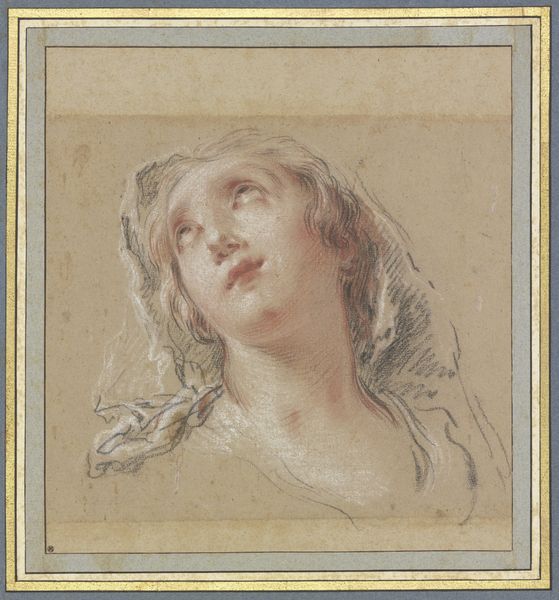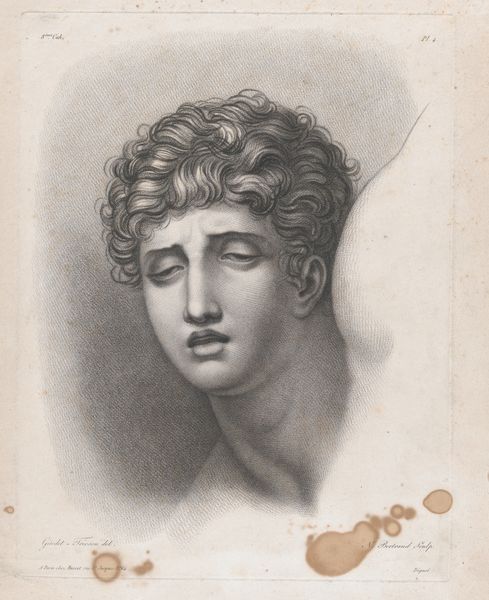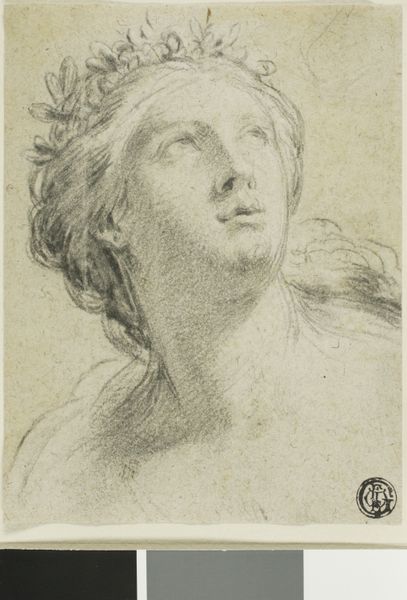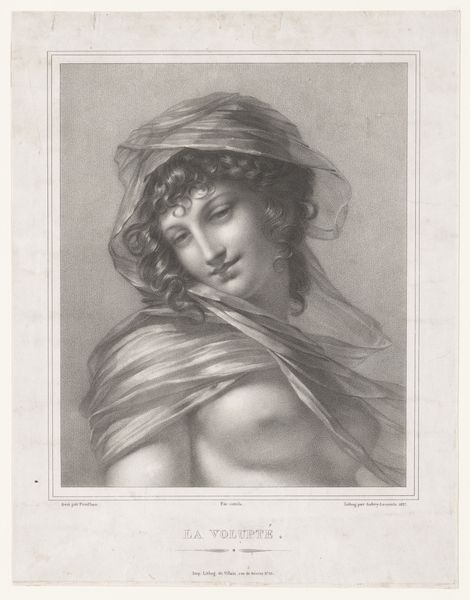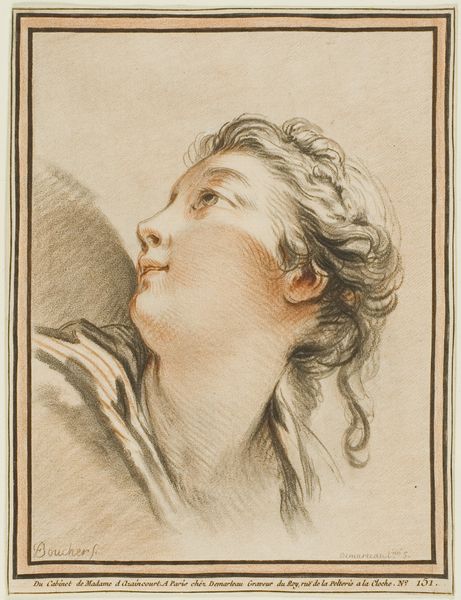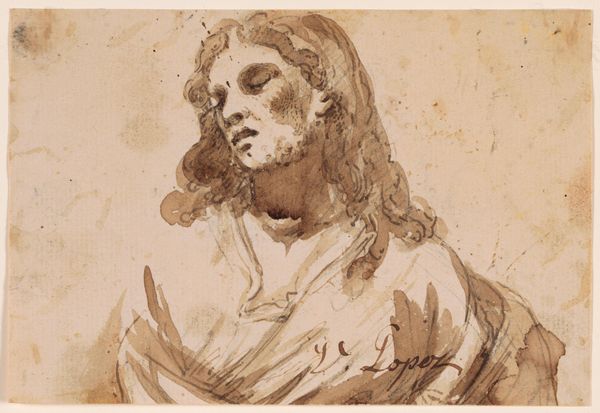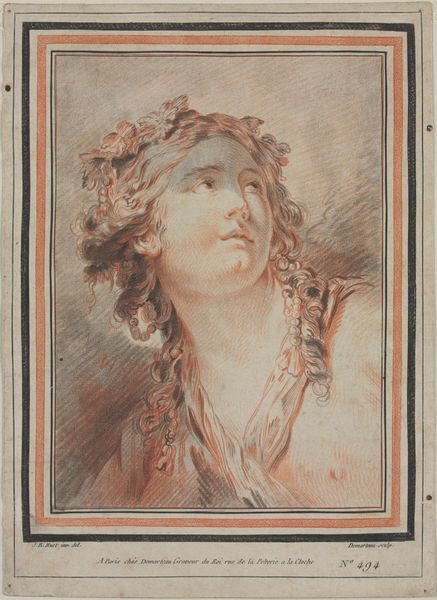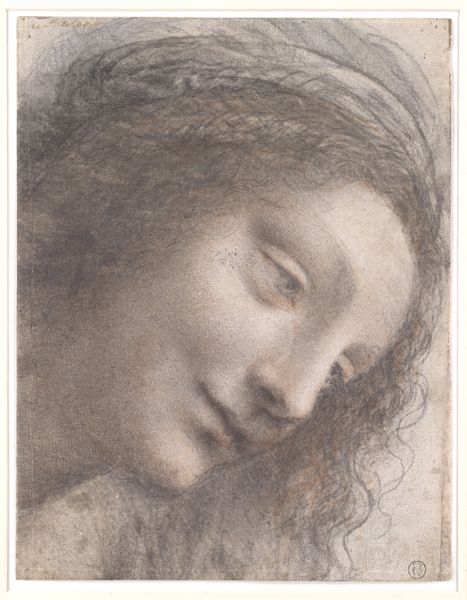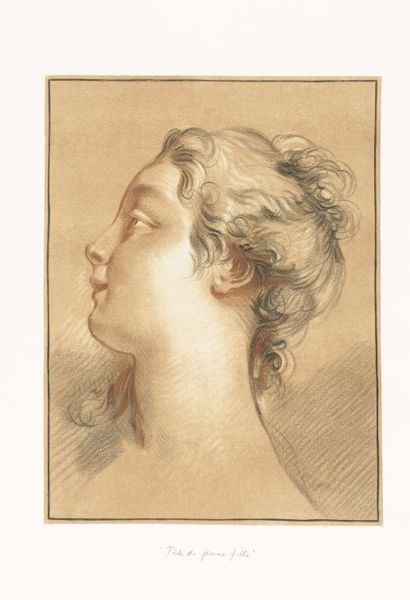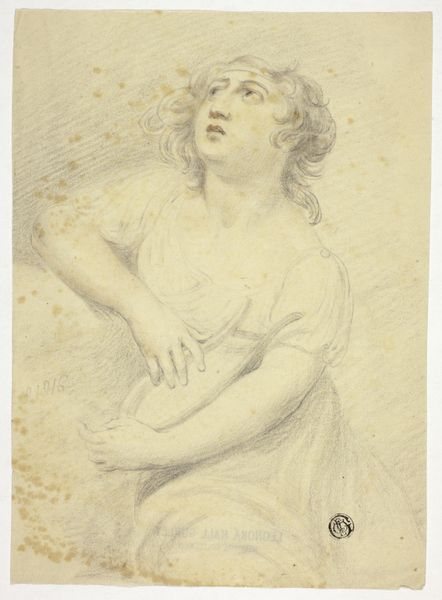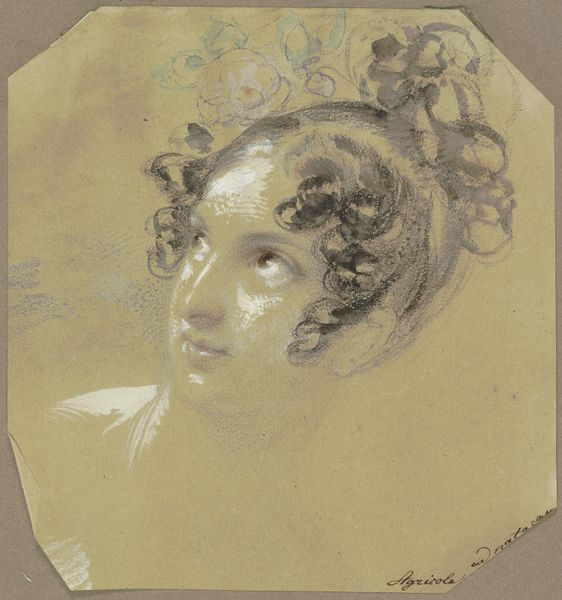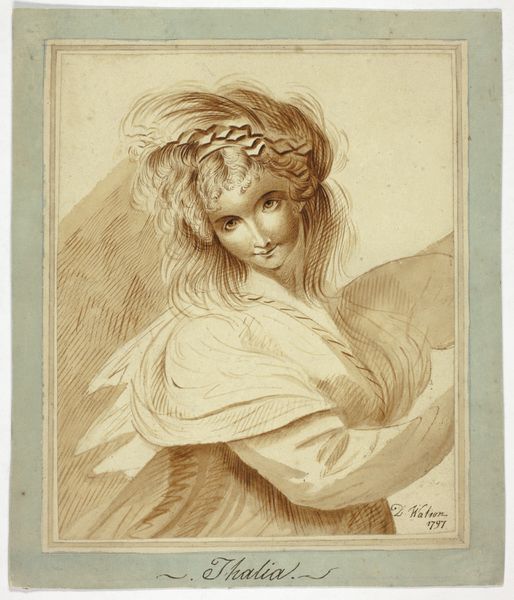
Dimensions: 253 × 199 mm
Copyright: Public Domain
Curator: Welcome, everyone. We're standing before "Lamia," a work realized in 1885 by Will Hicock Low, presently residing here at The Art Institute of Chicago. It is composed of gouache and charcoal on paper. Editor: The soft hues lend a dreamlike quality to the subject. There’s an introspective feel; a sense of contained emotion about her. She seems both alluring and melancholic, rendered in that almost monochrome palette, encased by this faux pearl frame. Curator: Low’s approach very much embodies the academic and romantic styles of his time. Consider how portraiture during this era often depicted idealized beauty and how Low was dedicated to reviving classical traditions in American art. "Lamia," in particular, speaks to the Victorian fascination with mythological figures. Editor: And it's interesting how he positions Lamia. While often represented as a monstrous figure, here she is stripped bare of her supposed monstrousity, almost a symbol of silenced feminine rage, constrained by the society around her. How often are women, who dare to defy patriarchal structures, branded as monsters? Curator: That's an intriguing angle. It highlights the complexities inherent in Low's artistic choices and the sociopolitical milieu within which this piece was made. He walks a line between reinforcing and questioning those norms. His other works certainly reinforce conventional tropes. Editor: Exactly! And look at the texture he achieves with charcoal and gouache. The shading almost looks sculpted and it is important that we consider not just the story or figure being depicted but the way Lamia’s image—and by extension her power—are managed and conveyed through these choices. Curator: Indeed, his technical skill speaks to his rigorous academic training in Paris. The very act of framing her, as you mentioned, lends a particular kind of importance and reverence, mimicking classical medallions and further legitimizing his subject matter as worthy of consideration. Editor: This is why understanding these historical contexts is so crucial; the artistic decisions, what is depicted, how the subject is rendered all these feed into broader dialogues of identity, power, and representation. This Lamia can then be placed into the larger, continuing narrative about who gets to be visible and under what terms. Curator: Precisely, it's a valuable thing to consider the layered interpretations present within a seemingly straightforward portrait of idealized beauty. Editor: Agreed. It leaves me with the lingering question of how we might reframe such figures ourselves, to give their untold narratives a voice and recognition, finally.
Comments
No comments
Be the first to comment and join the conversation on the ultimate creative platform.
